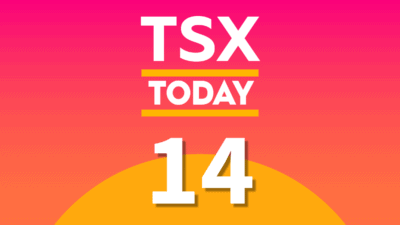Global stock markets continued to be wracked by rising volatility because of a range of economic and geopolitical events that are fueling greater concern among investors. This is generating renewed interest in precious metals, including gold, silver, and platinum, as investors seek safe-haven investments to avoid this volatility.
1. Geopolitical and economic risk is rising
Economic and geopolitical crises are gripping the globe. Earlier this year, emerging markets plunged as the Argentine peso was sold off; now Argentina has defaulted yet again on its debt, and there is growing concern that Portugal’s banking system is nearing collapse.
Conflict is raging across the Middle East, with insurgents controlling swathes of Syria and Iraq, renewed open warfare between opposing parties in Libya, and Israel continuing to prosecute a war against Hamas in the Gaza Strip. War in the Ukraine is also intensifying, with it fast becoming a proxy conflict between the West and Russia, fueling further concern about how far it will escalate.
These developments have thrown the spotlight firmly on safe-haven investments and will continue to push silver prices higher as investors seek a cost-effective alternative to global stock markets.
2. The gold-to-silver ratio widens further
Historically, there has been a close correlation between the prices of silver and gold. This is expressed in the form of the gold-to-silver-ratio, indicating how many ounces of silver are needed to buy one ounce of gold. Over the years this ratio has fluctuated wildly, falling as low as 20 ounces of silver to buy one ounce of gold in 1970 to a high of 89 ounces in 1991.
For the year to date, the ratio has widened, now requiring 66 ounces of silver to buy an ounce of gold. This is well in excess of the historical average of 47 ounces over the last century and well above the figure 43 ounces required at the height of the gold bull market.
If silver correlates to gold at the same level as at the peak of the gold bull market, then silver offers potential upside of 53%. Even if the ratio narrows to the average over the last century, there is potential upside of 40%.
This indicates that now is the time to buy silver as a hedge against both inflation and as a safe-haven investment in place of gold.
3. Demand is set to outstrip supply
Unlike gold, silver is an industrial commodity, possessing a range of uses in a variety of industrial applications. In 2013, industrial use accounted for 54% of total demand, and this is expected to grow. One of the biggest drivers of industrial demand for silver is its use in the manufacture of photovoltaic cells. During 2013, 35 million ounces of silver, or 6% of total demand, were consumed in their manufacture; this is expected to jump to 52 million ounces in 2014 and double to 100 million ounces by 2015.
However, while demand is expected to grow, supply remains relatively flat, with global silver supplies in 2013 falling by 3% compared to 2012. This meant that demand for silver outstripped physical supply by just under 11%.
I expect this supply shortage to continue, with silver miners including Pan American Silver Corp. (TSX: PAA)(NASDAQ: PAAS), First Majestic Silver Corp. (TSX: FR)(NYSE: AG), and Endeavour Silver Corp (TSX: EDR)(NYSE: EXK) winding down capital investment in developing new mines because of softer silver prices. This will further buoy silver prices as demand outstrips supply.
How do investors cash in on silver?
The primary ways to cash in on the expected rally in silver are either through physical ownership of bullion or by investing in a silver exchange-traded fund. The physical ownership of bullion can be problematic, with wide buy/sell spreads, making a significant price hike imperative if the investment is to be profitable.
Silver ETFs offer a far more liquid option. The largest silver ETF is the iShares Silver Trust ETF (NYSE: SLV), while for investors seeking something closer to home, there is the iShares Silver Bullion ETF HDG (TSX: SVR). However, ETFs come with one key disadvantage: Investors are obligated to pay an expense ratio, which over time eats into returns. For the Silver Trust ETF, the ratio is 0.5%, whereas the ratio for the Silver Bullion ETF is 0.67%.
Thus, I believe that silver miners offer a superior option, with the lack of fees and their leveraged exposure to silver offering superior potential upside.
Lower cost miners such as Silver Standard Resources Inc. (TSX: SSO)(NASDAQ: SSRI), Pan American, and First Majestic reported second quarter of 2014 all-in sustaining costs of $16.34, $18.23, and $18.18 per ounce respectively, and are well positioned to boost profitability as silver rallies. In contrast, Endeavour continues struggling with costs and profitability with all-in sustaining costs of $20.48 per ounce, higher than the average realized price of silver over that period.
Pan American and First Majestic are also ramping up exploration and development, which will boost reserves and production, leaving them well-positioned to take full advantage of firmer silver prices. Silver Standard is sitting on massive silver reserves of 479 million ounces at its Mexican Pitarrilla asset, which will become commercially viable to mine when silver prices are over $20 per ounce.
This makes Silver Standard is a riskier bet than Pan American or First Majestic, which have solid balance sheets and the ability to remain profitable at lower silver prices then many of their peers. However, of the three my preferred choice is Pan American, because it continues to reward patient investors with a juicy dividend yield of 3.5%.
 Stock Up Sale
Stock Up Sale







